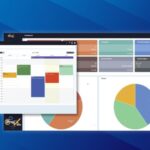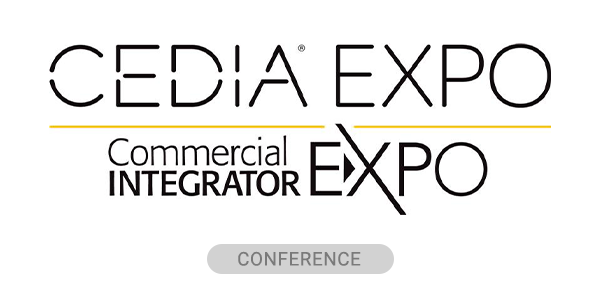They’ve adopted that technology, which traditionally would be within the AV space, now into their overall suite of solutions that they provide to the market.
CI: I’m interested in what the biggest challenges are for IT directors. What do you think keeps IT directors up at night?
DiMarco: I’d say it’s two areas. Security is paramount to everything, right? How do I keep my organization compliant? How do I understand things like PCI regulation and train my entire staff on that and understand all the complexities and all the technology? That’s what they say about that. It’s a really big challenge that we’re seeing right now.
Then, secondly for IT directors, how do I absorb all of the solutions that are out there and use them to not only make my job relevant but also make my business relevant as well? They’re all struggling with, “How do I absorb what’s going on with the cloud? What’s going on around hosted solutions, collaboration solutions, CRM as an example? Then how do I take that and fit it into my business today?”
Very few IT directors that I interface with, I talk to MSPs who are kind of representing the IT director, would say that there are lots of homogenous solutions that are out there. None of them are truly vertical-based. I want things that are relatable to my business, highly relatable to what I have to do every day. I need providers that will help me with that environment, right?
CI: You bring up the business side and it must always be a challenge to justify any shift with a business strategy.
DiMarco: Unfortunately, I would tell you, at times the technology gets ahead of itself. We all grab at it and we want to sell it. If you look at it from an IT director’s standpoint, they’ve got to take that. They’ve got to absorb that into their business.
Hosted voice is a really good example. In a healthcare environment, it’s got to be HIPAA compliant. How do I ensure that deploying hosted voice will not only be productive for me, it will reduce my costs but also will keep me compliant from a HIPAA standpoint as well.
Then what does that mean to all the various partners that I have in a healthcare organization? All of the doctors that potentially use my surgery clinic, as an example, they’re kind of coming in and out of the facility. How do I ensure that those interactions are secure at the device level and at the collaboration level as well? That’s a big deal.
The other thing is, how do I absorb the solutions and applications that are out there that will make my business better? The CRM application for a company that sells fitness solutions, as an example, they’re looking for much more customization in those solutions.
CI: Why the particular focus on the K-12 market during this event?
DiMarco: Couple of things that we’re seeing today, a lot of it starts with the tremendous growth in K-12 around the use of technology. The 101 learning initiative has said that every student has to have access to a computing device that is connected to the internet, right? That device needs to be in the classroom.
As part of that, we’ve created a significant amount of demand in the marketplace. The resellers who sell to K-12 users need to be ready. Any time a channel or VARs and resellers need to be ready for something, the distribution part needs to step up and help them with services and enablement and line carting products. That’s the opportunity that we plan to capture.
Step one of the process, and I would say this is probably a 10-year journey. That’s what most K-12 partners would tell you. Step one is deploying those devices out to the classroom. Essentially they’ve been Chrome devices, right? Over the last 18 months we’ve seen tremendous growth.
Step two is to take those devices and make the connectivity ubiquitous, not only across the classroom but across the entire campus. Tremendous growth in wireless infrastructure to make that happen.
Need Help Finding Good Labor?
Learn the secrets of leveraging third-party labor in this free Commercial Integrator webcast presented by Almo Pro A/V!
Step three is more advanced learning solutions. Think of the Google Expedition platform that allows you to work through geography and experiences around the world, allows the student to do that.
Then also advanced learning in the STEM area, right? Advanced mathematics, advanced engineering for higher-level students will all necessitate the need for most business applications in the classroom and then higher-end devices to help them with computing.
Those three things in concert with one another are really what’s driving all of the growth. We’ve got a number of programs and things that we’re doing with the K-12 advisory group that helps literally any partner who can go from not being in the K-12 space today to getting into it, to those that are already in it today and helping them enable their business.
CI: It seems like K-12 is a tough market to break into at the same time as being a difficult market for embedded integrators to keep pace with.
DiMarco: Absolutely. I could tell you that many IT directors have moved from maintainers and almost custodians of their shops, so they’ve got to be thought leaders. They’re getting pressure from superintendents and technology groups and student-parent groups, parent-faculty groups that help drive technology decisions.
Many school districts are hiring STEM directors, which is interesting because that person’s going to know more about technology and where it’s advancing than the IT director in the building as well.













